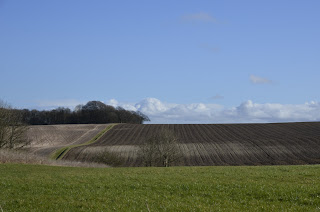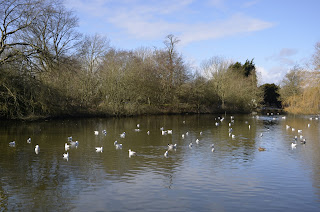Edie Nadelhaft
Edie Nadelhaft is a Manhattan-based
contemporary artist known for her bold, visceral oil paintings and slick,
technology-inspired sculpture. Her work has been widely exhibited throughout
the US at galleries and art fairs including Texas Contemporary (Houston, TX
2013), CONTEXT art Miami (Miami, FL 2012), Woodward Gallery (NYC 2013) and
Family Business (NYC 2012), and abroad in China, Taiwan and Basel, Switzerland.
Upcoming exhibitions include Face-to-Face: Wall to Wall, at Yellowstone Art
Museum (Billings, MT 2014) and Water, Water... Kianga Ellis Projects (NYC Fall
2013). Drawing inspiration from contemporary hyper-realism, 20th century
abstraction, 1960’s minimalist sculpture and the industrial design trend known
as "cuddle-tech", Nadelhaft’s deeply sensual works address the space
between physical and psychological presence, a uniquely human experience firmly
ensconced in the glossy sheen of an increasingly digital culture.
“My
work is an exploration of the physical world and the human experience, and the
impact of digital culture on perception. I am interested in scale, color
systems and the strange perspectives offered by (what has lately become
ubiquitous) digital imaging technology.” –Edie Nadelhaft
Edie Nadelhaft skin photographs
reveal the flaws and imperfection of the human body’s natural skin causes
through digital photography. She tends to capture the disfigurement of the
human hand whilst the red blood vessels burst through the hand to create an
explosive effect. Her photographs depict the ‘color systems’ and ‘human
experience’ of the human hand as she has a tendency to explore the physical
world. Furthermore, Nadelhaft has captured a very close shot of the hands with
intense detail of human hands form. The fleshly wrinkly effect is really
effective as Nadelhaft has captured the flaws of the human body. Additionally,
you can see the purple veins popping through the hands, hence why the skin has
exploded into a pink/red colour whilst the Nadelhaft has created a deformed
figure in the human form. The abnormality Nadelhaft has tried to create is
really effective as she has used the flaws of the human body to capture the
deformed perspective. This helps to establish the flaws and imperfections of
the human body. The composition of these photographs is the depth of field as
the detail is incredibly enhanced. The perspective has created has given people
the thought of how deformed the human form can be as Nadelhaft has highlighted
the imperfections of the human form through her manipulation. In addition, you
can tell that these photographs have been edited on Photoshop as the intensity
of the detail as increased, as well as the vibrance, saturation, contrast and
clarity as Nadelhaft has tried to establish the tone and exposure of these
photographs. The lighting is really effective in these photographs as they
bring out the highlights and shadows. These photographs make me feel deformed
and defeated as the human form cannot always be seen as a beautiful aspect to
the physical world we live in.
Experimental Photographs:
This photograph is a inspired replication of Edie Nadelhaft photographs as she
tends to capture the human skin and transform it into something repulsive. This
photograph depicts a extreme close up of a human hand creased into a ball, I
have zoomed into this photograph with the DSLR’s intense mega-pixels as the
focus was really hard to capture. The intense zoom has managed the capture the
depth of the human skin, the skin looks outdated and stale whilst its creased
into a ball bringing out the deformed wrinkles. The composition of this
photograph is really effective as it portrays the depth of field. The depth has
managed to capture the detail of the human skin which is really effective.
Moreover, the camera angle and position is well positioned as the perspective
makes this photograph look repulsive and disgusting, however this sort of ugly
beauty can be seen as a beauty in the banal. I have edited this photograph on
Adobe Photoshop by using the HDR Toning to increase the radius, strength,
exposure, gamma correction, detail, vibrance and saturation. These effects
helps to establish the detail and tone in this photograph. The lighting in this
photograph is really effective as it has captured the bright and dark shadow
patches. This photograph makes me feel contaminated and outdated due to the
intense detail which has captured the pumping purple veins bursting through the
skin creating a abnormal effect. I have chosen this photograph as my final
photograph for this brief because it is the most similar to Edie Nadelhaft’s
photograph work, the photograph has managed to capture the ugly beauty in the
human skin and develop it into something deformed and abnormal. I have chosen this concept as an idea for my final theme due to the flaws and imperfections highlighted in this concept, it brings out the human in us which is fascinating.
Aaron Huey
Aaron Huey (born December 9, 1975)
is an American photojournalist and documentary photographer who is most widely
known for his walk across America in 2002 and his work on the Pine Ridge Indian
Reservation. He grew up in Worland, Wyoming, graduating from Worland High
School. He received his BFA from the University of Denver, in Colorado in 1999.
Aaron Huey’s photography is mainly based on the journey he went on across
America which is irrelevant to my final brief. What is relevant is this digital
photograph he has captured which has significantly inspired me to work on
‘photography through glasses’. This fascinating photograph has an intriguing
effect to it as Aaron Huey has captured the main aspect of the photograph
through the lens of a pair of glasses. The lens effect helps to establish the
extreme perspective as the manipulation brings out the beauty of the physical
world we live in. Moreover, the double image from the glasses gives this
photograph an amazing effect as it brings out the strange aspects of
photography. The lens effect helps to establish the perfection that contains
within itself a living moment that allows a glimpse of time to be experienced
and preserved endlessly. The composition of this photograph is really effective
as it portrays the depth of field. Huey has captured the depth of the detail in
the glasses whilst keeping the background blurry. The camera angle and position
is really effective as it almost looks as if this is a point of view shot
whilst the camera is slightly tilted. The angle brings out the clear blue sky
which is really effective as Huey has captured the beautiful aspects of the
world. This photograph makes me feel that there’s more than one eye in the
world that is watching over us and also that there are many perspectives and
visions which can be seen in this world that are unique and different. This
photograph relates to the brief objective as Huey has comprised the idea of
capturing the beautiful world through another perspective.
Experimental Photographs:
Have you ever considered what life would
be without photographs? Or how important and iconic photographs can be? “Photography
is a way of feeling, of touching, of loving. What you have caught on film is
captured forever... it remembers little things, long after you have forgotten
everything.” American Photographer Aaron Siskind states
that photography has many aspects to its fine arts reputation as it gives us a
sense of being. Photography is our very own gratification that we can construct
and modify to create a perspective and perceive it to the world. The power of
photography defines the timing, morality and memory of the moment with one
capture which will imprint into the human mind forever and I completely agree
with him. This final photograph relate to the brief ‘Flaws, Imperfections,
Ideals and Compromises’ due to the incentive of having to adjust to the
compromises that occurs in this physical world we live in today. As technology
has significantly enhanced in our generation, the ‘digital age’ has developed
our imagination incredibly with more ideas bursting through people’s minds. The
imagination in these photographs depict the different perspectives which can be
viewed from a pair of glasses, from a point of view shot. My objective is to
prevail the different perspectives and visions people have as everyone is
unique in many different ways. The crystal, sharp, detail inside the lens of
the glasses has a different vision from the blurry background which shows that
there can be a mixture of perspectives which can combine and create something
fascinating. The blurry background can be seen as a flaw or imperfection whilst
the small detail of the glasses can be seen as a compromise. This sort of
combination will be the perfect way to conclude my final photograph.
The
composition of this photography is the depth of field. The depth of field is
really effective in this photograph as I have captured the detail of the
glasses whilst the background is blurred. The camera angle and position is
really efficient as I have captured a point of view shot to put the audience in
my shoes. This perspective will help the audience to relate to the vision I
see. I have edited this photograph on Adobe Photoshop by firstly, using the
‘Lasso’ tool to draw a circle around the glasses lens and insert the original
photograph of the location into both glasses lens. Secondly, I have increased
the brightness, contrast, exposure, gamma correction, vibrance and saturation
on both layers to make the clear image stand out from the background. I wanted
to explore the colour systems that Aaron Huey has done in his photography.
These effects help to establish the detail and tone in this photography. The
lighting in this photograph is really effective as the bright tone brings out
the subject matter. This photograph makes me feel positive and insightful as
the vision in this photograph helps me to focus on reaching my objectives. I have chosen this concept as an idea for my final theme due to the creativity and vision it portrays.

























































